It’s that time of year again: no, not spring break but the time when we celebrate religious holidays and punctuate them with a major feast. Whether you are religious or not, the majority of Americans will be enjoying a huge meal this weekend.
The question for those who are obese is: How do you wake up on Monday without feeling guilty?
The good news is that you can survive this weekend without needing a larger belt. Here’s what you need to know:
1. The Days Leading to the Big Meal
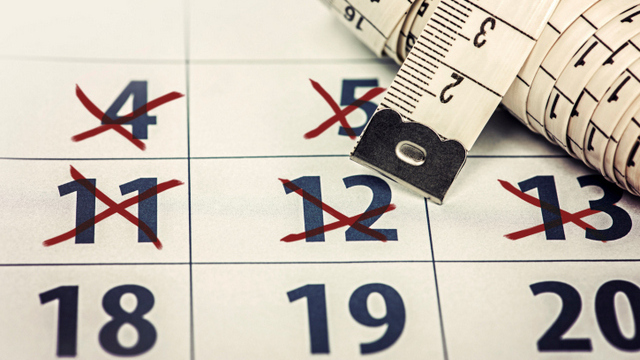
Countdown to the big meal.
When you know that you have big holiday meals or parties coming up, it is a good idea to cut back a little bit on what you are eating in the days beforehand. Even if you make a modest attempt to eat less, you will be doing yourself a big favor.
Try skipping high calorie foods and restricting treats for a week or so. Your body has an internal calorie savings bank and will keep track of your good work.Then you won’t be as bad off when you overdo it on the big night.
It only takes a few smart food choices to save a lot of calories.
Furthermore, who knows? You might even end up eating less at the function after you’ve been doing so well up to then.
Where you can go wrong: Even with a good head start going into the meal, don’t use that as an excuse to go wild afterwards. Your careful eating will develop only a small reserve of calorie savings. If you end up eating way too much you will inevitably suffer on the scale later.
2. The Day of the Feast
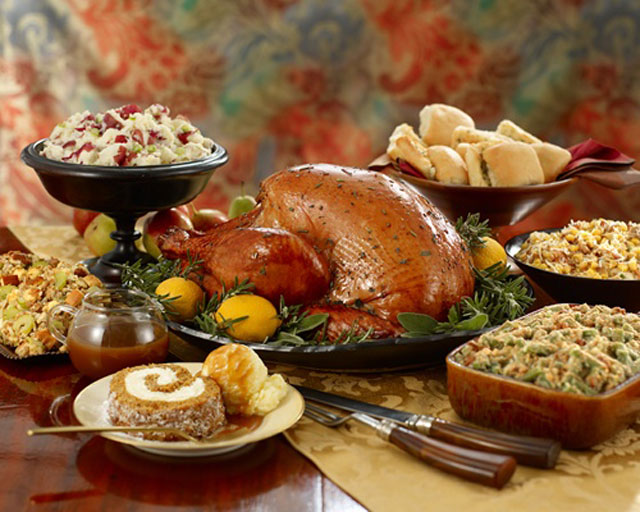
The big feast is coming — get prepared.
On the day of the big meal it is important to make sure you have something to eat during the day and not to try fasting.
The common misconception is that if you skip breakfast and lunch, you will “save” your calories for later. However, by the time dinner arrives, you will be in a ravenous mood and begin grabbing for everything in sight, as if it is owed to you for your earlier good behavior.
If you fast, you will walk in with a mood of reckless abandon and begin downing potato chips, onion dip, eggnog, pigs in blanket. Even worse, dinner hasn’t even started yet.
A much better plan is to eat lightly during the day: perhaps some oatmeal for breakfast and a salad for lunch with a scoop of tuna. That will take the edge off of your appetite and you will be less out of control when dinner time comes.
Where you can go wrong: Be careful to not overdo it prior to dinner. It’s one thing to have a small, satisfying breakfast and lunch and quite another to snack all day pretending like you are doing a good thing. The point of the exercise is to avoid feeling famished, not to begin your gluttony early.
3. When You Arrive
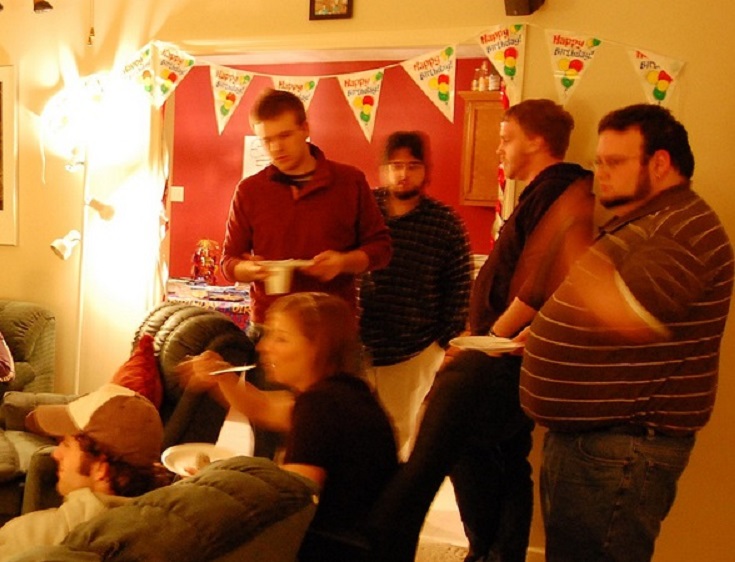
Arriving at a party. (Flickr/ Robert Meeks)
This is the most important moment. It sets the tone for the entire evening.
Do you walk in, hand off your jacket, greet friends and family and then slowly ease into the drinks and appetizers? Or do you walk in, grab the first thing you see and hold it between your teeth while shrugging off your jacket?
You know what you should do here. It is important to pace yourself, not let your hunger overwhelm you. That’s why you were not supposed to skip breakfast or lunch, so that you wouldn’t be out of control when you arrived. If you didn’t do that, now you need something, anything, to quell the hunger.
Where you can go wrong: It is so easy to let yourself go and start eating when you arrive. “It’s a holiday. It’s expected,” you justify to yourself. But you’re wrong. Watch normal-weight people and see what they do.
4. Take a Plate
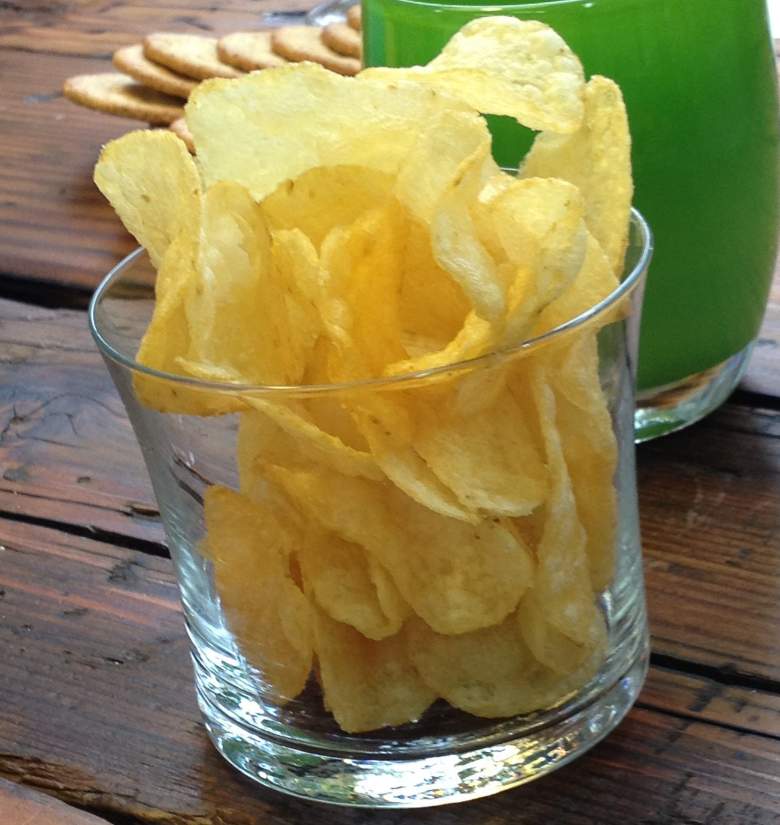
Potato chips waiting for you. (Flickr/Jameson Fink)
The worst thing you can do is stand over the potato chip bowl and keep grabbing handfuls. It leads to dramatically increased consumption because in the back of your mind you have no idea how many you have eaten.
MUCH better is to take a plate, preferably a small one, and put some food on it. Even if you fill up the plate and go back for seconds and thirds, you will end up better off than free-range grazing.
Where you can go wrong: Some small tidbits pack a lot of calories. Pigs in blankets have about 80 calories each. If you grab five of them you just took 400 calories. Go back for five more and you are up to 800! Eggnog, tasty as it is, packs a punch of 120-200 calories for just four ounces. Other delicious but dangerous appetizers to be careful with: cheese and crackers, onion dip, fried mozzarella.
Go slow on the calorie-dense food.
5. Dinnertime!
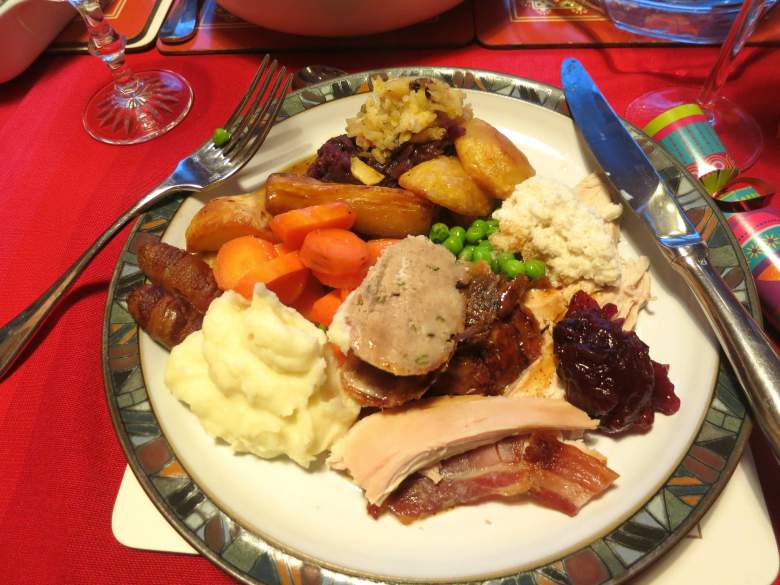
Holiday dinner plate. (Flickr/Ruth Hartnup)
Say that the food is served family-style. Plates are passed around the table and you serve yourself. Assuming you have handled yourself correctly so far and you haven’t made an entire meal out of your hors d’oeuvres then you are probably pretty hungry right now.
However, at this critical moment you have a significant chance to take control in a way that will make a huge difference in your calories.
- Serve yourself less food than you think you will want.
Why? Because when you take a lot of food you feel obligated to eat it all. You can always ask for seconds. - Focus on lean protein: turkey, ham, roast beef.
Why? Protein is more filling and has fewer calories. Also, since it takes longer to digest it will leave you satisfied longer. - Minimize high calorie, fat-laden foods.
Why? This one should be obvious. However, let’s take a look at some simple solutions that can lower your calorie-risk quickly and easily. - Gravy: Bad, minimize it all costs. Yes, I know it tastes good but try a substitute: ketchup, mustard, cranberry sauce, etc. If you have a choice, use the natural gravy instead of a prepared one.
- Mashed Potatoes: Bad, deceptively so. It’s not the potato but the added butter and milk that are bad. If you have a choice, go for regular baked potatoes or even sweet potato casserole (or yams) as long as you avoid the toppings.
- Buttered rolls: Fair, as long as you don’t overdo them.
- Stuffing: The stove top is marginally better than the stuffing from the bird.
- Vegetables: Good to bad depending on the preparation. Sautéed is bad, steamed is excellent. Of course, no one goes to a holiday dinner to fill up on string beans!
Where you can go wrong: At some point, your willpower can get overwhelmed and then you stop caring. Don’t give in! Maintain a little vigilance and you can get out of this night with your dignity intact. You don’t have to deprive yourself, just don’t lose control.
Bonus – Dessert Time

Holiday Dessert Extravaganza (Flickr/APlum)
The final test of resolve. Hopefully by dessert time, you are full enough that you don’t need anything else.
However, in the next ten minutes if you are not careful you might consume more calories than in the rest of the night put together.
In a word, dessert is treacherous. Ice cream and pie are so easy to eat that even when you are virtually bursting you still have some room for these super-high-calorie treats. This is the time to hold back, take just a small amount and skip seconds.
Where you can go wrong: Cookies are 50-100 calories each, depending on size. A small sliver of pumpkin pie is a remarkable 250-300 calories. A single serving of ice cream is 150-250 calories. That would be four ounces. Not whatever fits on your plate.